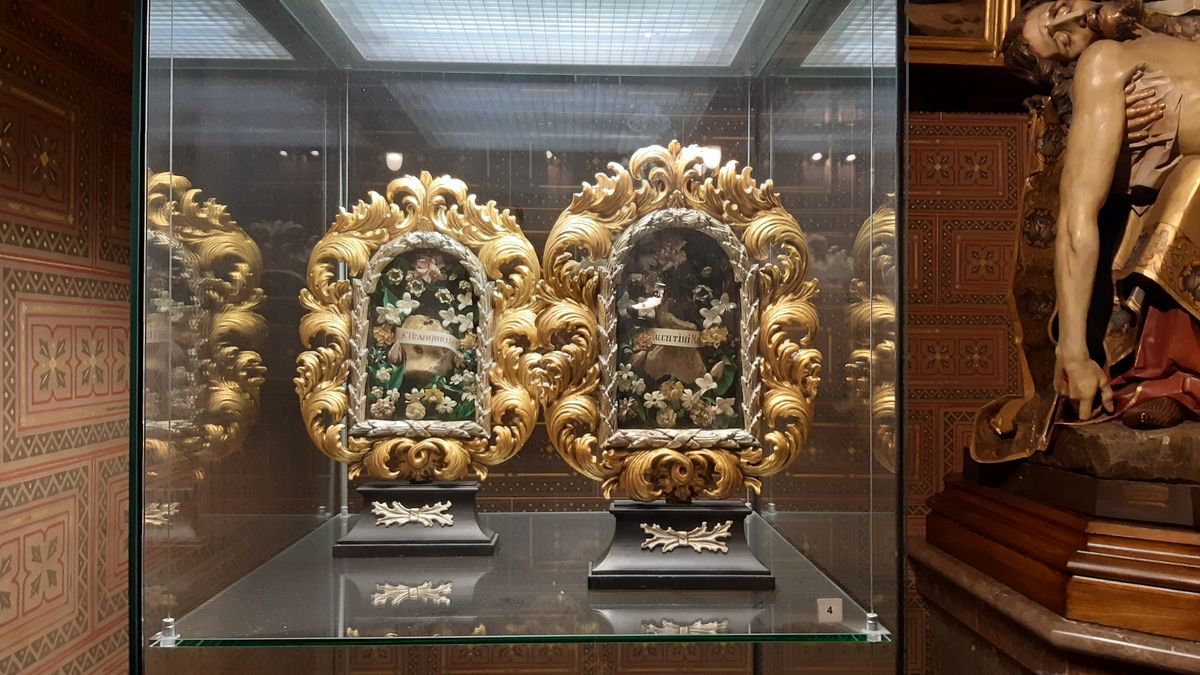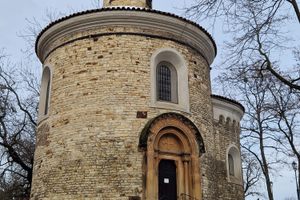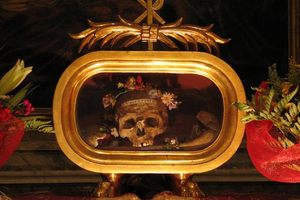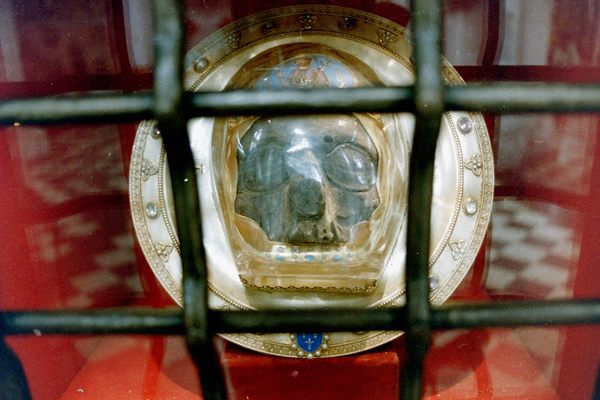About
In 2002, while sorting through the basement at the Basilica of Saints Paul and Peter in Prague, members of the church stumbled upon several relics, one of which was labeled as the shoulder blade of St. Valentine. It is believed to have been brought to Prague in the 1300s by Holy Roman Emperor Charles IV, who lived in Vyšehrad, the castle that houses the church. St. Valentine’s bone is now on permanent display and celebrated with a mass every February 14th.
Determining legitimacy is especially hard when it comes to relics of St. Valentine. There were a number of Catholic saints known as Valentine, and many years passed between their deaths and the distribution of their bones to churches around the world. At least two of the saints Valentine lived in Italy in the late 3rd century, and another in North Africa around the same time.
Over time, the stories of these different men seem to have merged, and today most of the mythology about Valentine centers around him being a patron of lovers. In 496, Pope Gelasius I made February 14—originally part of the Roman festival of Lupercalia—a feast day dedicated to St. Valentine.
Today, there are no fewer than 10 places claiming to house relics of St. Valentine around the world, including the Basilica of Santa Maria in Rome, Roquemaure Church in France, and Whitefriar Street Church in Dublin.
Related Tags
Community Contributors
Added By
Published
February 14, 2012
































